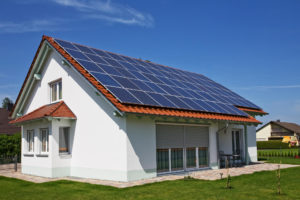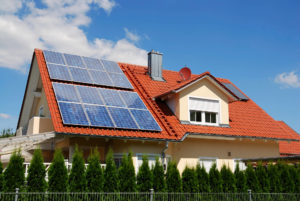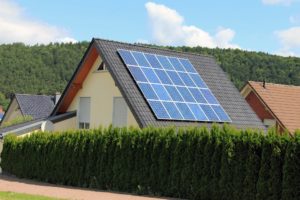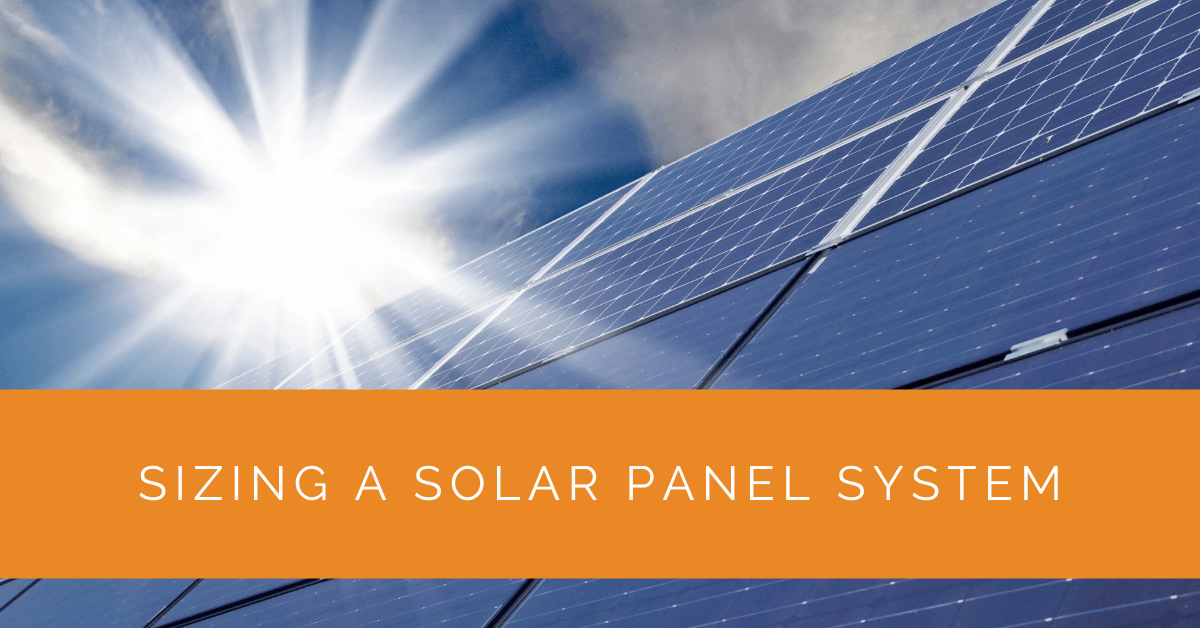Harnessing the power of the sun through solar panel systems has become increasingly popular due to its numerous benefits. However, determining the right size for your solar panel system is crucial to ensure optimal energy production and cost savings. This article will provide a detailed step-by-step guide on effectively sizing a solar panel system.
Contents
- 1 Key Takeaways
- 2 Understanding the Importance of Sizing a Solar System
- 3 Factors to Consider for Solar System Sizing
- 4 Calculating the Size of Your Solar System
- 5 Optimizing the Size of Your Solar System
- 6 Determining the Number of Solar Panels
- 7 Case Study: Custom Solar Panel Sizing for Optimal Energy Production
- 8 Expert Insights From Our Solar Panel Installers About Sizing a Solar Panel System
- 9 Experience Solar Excellence with Us!
- 10 Conclusion
Key Takeaways
- Properly sizing a solar panel system is crucial for optimizing energy production, minimizing costs, and ensuring efficient power generation that meets your specific energy needs.
- Factors such as energy consumption patterns, available roof space, panel efficiency, and future energy requirements must be carefully considered during sizing.
- Determining the number of solar panels and selecting the right panels based on performance, cost, and long-term value is essential for maximizing the benefits of your solar power system.
Understanding the Importance of Sizing a Solar System
Sizing a solar panel system goes beyond simply installing a certain number of panels. It involves carefully assessing your energy needs, available resources, and long-term goals. You can maximize the benefits and avoid potential pitfalls by accurately sizing your solar system.
One of the primary reasons for sizing a solar panel system correctly is to ensure that it generates enough electricity to power your home or business efficiently. Undersized systems may not meet your energy demands, leading to a reliance on the grid or increased electricity costs. On the other hand, oversized systems can produce excess energy, which goes to waste if not utilized or stored effectively.
Moreover, proper sizing enables you to optimize the return on your investment. Determining the right system size can balance the initial installation cost with long-term energy savings. It also allows you to make informed decisions regarding the number of required panels, inverters, and other system components, minimizing unnecessary expenses.
Factors to Consider for Solar System Sizing
When sizing a solar panel system, several factors come into play. Considering these factors will help you determine the optimal size for your system and ensure its efficiency and effectiveness.
Evaluating Your Energy Usage
Before diving into the specifics of system sizing, it’s important to evaluate your energy usage patterns. Reviewing your average monthly energy bills and assessing your consumption habits will provide valuable insights. Identify any energy-intensive appliances, such as air conditioning units, electric heaters, or pool pumps, as they significantly contribute to your overall energy needs. Understanding your consumption patterns allows you to calculate your solar system size more accurately.
Determining Your Solar Power Needs
Based on your energy usage evaluation, you can determine the amount of solar power you need to generate. Consider the percentage of your energy consumption you aim to offset with solar power. This will help you estimate the system size required to meet your specific energy goals. Additionally, factor in any future changes in your energy needs, such as expanding your living space or adding new appliances. By considering these aspects, you can plan for potential growth and avoid the need for system upgrades.
Assessing Available Roof Space
The amount of available roof space plays a crucial role in determining the size of your solar panel system. Assess the dimensions and orientation of your roof to determine how many panels you can install. Consider any obstructions like chimneys or vents that may limit the available space. Additionally, evaluate the shading on your roof throughout the day and across different seasons, as shading can significantly impact solar panel efficiency. Optimizing the use of available roof space ensures that you maximize the energy output of your system.
Considering the Efficiency of Solar Panels
Solar panel efficiency refers to the ability of the panels to convert sunlight into electricity. Higher efficiency panels generate more power per unit of surface area. Consider the efficiency ratings of different solar panels available when sizing your system. While high-efficiency panels may be more expensive, they can generate more electricity, allowing you to achieve the desired energy production with fewer panels.
Accounting for Solar Panel Orientation and Tilt
The orientation and tilt angle of your solar panels significantly impacts their performance. Ideally, panels should face south (in the Northern Hemisphere) or north (in the Southern Hemisphere) to maximize sunlight exposure throughout the day. The tilt angle of the panels should also be adjusted according to your geographical location to optimize energy capture. When determining the optimal panel orientation and tilt, factors such as latitude, climate, and seasonal variations should be considered.
By carefully considering these factors and conducting a thorough analysis, you can accurately size your solar panel system, ensuring it is tailored to your needs and conditions. Proper system sizing lays the foundation for a reliable and efficient solar power setup.

Calculating the Size of Your Solar System
A detailed and comprehensive approach is necessary to calculate the size of your solar panel system accurately. Following these steps can ensure precise results and make informed decisions.
Using a Solar Calculator for Initial Estimates
You can utilize online solar calculators to get a preliminary idea of the system size. These tools consider factors such as your location, roof space, energy consumption, and panel efficiency to provide an approximate system size. Solar calculators can serve as a helpful starting point for your sizing calculations.
Assessing Your Energy Consumption Patterns
To refine the estimate obtained from the solar calculator, conducting a thorough analysis of your energy consumption patterns is crucial. Examine your energy bills and identify any variations throughout the day or across different seasons. Consider the specific energy needs of individual appliances or equipment. This detailed analysis will provide a more accurate picture of your energy requirements, enabling you to fine-tune the system size accordingly.
Conducting a Detailed Solar System Calculation
For precise system sizing, it is recommended to perform a detailed solar system calculation. This calculation considers various factors, including solar irradiation, panel efficiency, temperature derating, inverter efficiency, and system losses. By utilizing advanced solar design software or consulting with solar professionals, you can generate a comprehensive system design that meets your energy needs accurately.
During the calculation process, it is essential to consider the specific wattage requirements of the solar panels and the overall system. This involves evaluating the available space on your roof, the desired energy output, and the expected solar irradiation in your location. Considering all these factors will result in a system size that aligns with your energy goals.
Consulting with Solar Professionals for System Design
If you feel overwhelmed by the technical aspects of system sizing or require additional guidance, it is highly recommended to consult with solar professionals. These experts have the knowledge and experience to assess your energy needs, evaluate your roof space, and design a customized system that maximizes energy production. They can provide valuable insights and ensure your solar panel system is optimized for efficiency and performance.
By following a detailed calculation process and seeking professional assistance when needed, you can determine the accurate size of your solar panel system. This will lay the foundation for a robust and reliable renewable energy solution tailored to your requirements.

Optimizing the Size of Your Solar System
Once you have determined the size of your solar panel system, there are additional strategies you can employ to optimize its performance and maximize the return on your investment. Consider the following aspects:
Balancing Energy Generation and Usage
Achieving a balance between the energy generated by your solar panel system and your actual energy consumption is crucial for optimal performance. Oversized systems may produce more energy than you need, leading to wasted resources. On the other hand, undersized systems may not meet your energy requirements, forcing you to rely on the grid. You can strike a balance and optimize energy generation by carefully assessing your energy consumption patterns and adjusting the system size accordingly.
Considering Future Energy Needs
When sizing your solar panel system, it is important to consider potential future changes in your energy needs. Suppose you anticipate increased energy consumption due to lifestyle changes, expanding your living or working space, or adding new appliances. In that case, it is prudent to account for these future energy needs during the sizing process. By incorporating these considerations, you can avoid the need for system upgrades or expansions in the future, saving both time and money.
Exploring Financial Aspects and Incentives
As you optimize the size of your solar panel system, evaluating the financial aspects and available incentives is essential. Solar power systems offer long-term cost savings by reducing or eliminating monthly electricity bills. Additionally, many regions provide financial incentives, such as government rebates, tax credits, or feed-in tariffs, to encourage the adoption of renewable energy. Assess these incentives and calculate the potential return on investment to ensure the optimal system size aligns with your budget and financial goals.
Furthermore, explore financing options that can make the upfront cost of installing solar panels more affordable. Solar loans, lease agreements, or power purchase agreements (PPAs) may be available, allowing you to install a larger system without incurring a significant initial expense.
Determining the optimal size for your solar panel system involves balancing energy generation, consumption, and financial considerations. By carefully considering these factors, you can ensure that your system is environmentally sustainable and economically viable in the long run.

Determining the Number of Solar Panels
Once you have determined the size of your solar panel system, the next step is to calculate how many solar panels are required to achieve the desired energy output. Consider the following factors in determining the optimal number of solar panels:
Calculating Solar Panels Required
To calculate the number of solar panels needed, you can divide the total system size (expressed in kilowatts or kilowatt-hours) by the wattage rating of each panel. For example, if your system size is 5 kW and each panel has a wattage rating of 250 watts, you would require 20 panels (5,000 watts ÷ 250 watts = 20 panels). This calculation provides an initial estimate for the number of panels needed.
Assessing Different Panel Options
As you determine the number of panels, it is important to assess various solar panel options available in the market. Different panels have varying efficiencies, durability, warranties, and costs. Higher-efficiency panels produce more electricity per unit of surface area, potentially reducing the number of physical panels required. Compare the performance characteristics, such as temperature coefficient and power tolerance, to ensure you select panels that align with your system goals.
Considering the Cost of Solar Panels
While determining the number of panels, it is crucial to consider the cost implications. Solar panel prices vary based on brand, technology, and efficiency. Evaluate different suppliers, obtain quotes, and compare the cost per watt or panel. Remember that although higher-quality panels may be more expensive initially, they often come with longer warranties and better performance, resulting in higher long-term value.
Exploring the Performance of Solar Panel Systems
Before finalizing the number of panels, explore the performance metrics of different solar panel systems. Research factors such as degradation rate, which indicates how much efficiency the panels lose over time, and temperature coefficient, which measures how well the panels perform in high temperatures. Additionally, consider power tolerance, which indicates the accuracy of power production in relation to the rated power of the panels. You can select panels with optimal performance and reliability by understanding these performance indicators.
Case Study: Custom Solar Panel Sizing for Optimal Energy Production
Background
At Solar Panels Network USA, we believe in tailored solutions for our clients. This case study highlights our approach to designing a custom solar panel system that maximizes efficiency and meets the specific needs of our clients.
Project Overview
Our client, a homeowner with a moderate-sized family, sought to reduce their dependency on grid electricity and lower their monthly energy bills. They wanted a solar solution that not only met their current energy demands but also allowed for future expansion.
Implementation
Evaluating Energy Usage
We started with a comprehensive evaluation of the client’s energy usage patterns. By reviewing their monthly energy bills and identifying peak consumption periods, we gained insights into their energy needs. We also took into account energy-intensive appliances like the air conditioning unit and electric heater.
Assessing Roof Space and Solar Potential
Next, we assessed the available roof space, considering dimensions, orientation, and potential shading from nearby trees and structures. Using advanced mapping tools, we optimized the placement of solar panels to ensure maximum exposure to sunlight throughout the day and across different seasons.
Determining Solar Power Needs
Based on the client’s current and projected energy needs, we calculated the optimal size for their solar panel system. This involved determining the percentage of energy consumption to be offset by solar power and planning for future increases in energy usage, such as the addition of an electric vehicle.
Selecting the Right Solar Panels
We evaluated various solar panels based on efficiency, cost, and long-term value. High-efficiency panels were chosen to maximize energy production per unit of surface area, allowing us to achieve the desired energy output with fewer panels.
Optimizing Panel Orientation and Tilt
The orientation and tilt of the panels were adjusted to match the client’s geographical location, ensuring optimal sunlight capture. Panels were oriented southward, with a tilt angle designed to maximize energy generation throughout the year.
Professional Installation and Monitoring
Our expert team handled the installation, ensuring all components were properly connected and aligned. We also set up a monitoring system to track energy production and consumption, providing real-time data to the client.
Results
The custom-designed solar panel system significantly reduced the client’s reliance on grid electricity, resulting in substantial monthly savings on energy bills. The system’s performance exceeded initial projections, with optimal energy production even during peak usage periods. The client appreciated the foresight in planning for future energy needs, as they later added an electric vehicle without requiring system upgrades.
Summary
Our meticulous approach to sizing and installing the solar panel system ensured that the client received a solution perfectly aligned with their current and future energy needs. By considering factors such as energy consumption patterns, available roof space, and panel efficiency, we delivered a high-performing and cost-effective solar power solution. At Solar Panels Network USA, we are committed to providing customized solar solutions that offer long-term value and sustainability.
Expert Insights From Our Solar Panel Installers About Sizing a Solar Panel System
Harnessing solar power starts with understanding your energy needs. It’s not just about placing panels on your roof; it’s about optimizing the system to meet your specific consumption patterns. This detailed assessment ensures you’re not over-investing or underutilizing your solar resources.
Senior Solar Installation Engineer
Evaluating roof space is crucial. Shading, orientation, and tilt all impact efficiency. We leverage advanced tools to map out the best panel layout, ensuring maximum sunlight capture and energy production.
Lead Solar Technician
Future-proofing your solar system is essential. Considering potential increases in energy usage, like new appliances or an electric vehicle, helps in designing a system that adapts to your growing needs.
Solar Energy Consultant
Experience Solar Excellence with Us!
Trust in Solar Panels Network USA, where our seasoned experts deliver top-quality solar solutions for homes and businesses nationwide. With a legacy of countless successful installations and a commitment to sustainable energy, we’re your reliable partner in the solar journey. Ready for a brighter, eco-friendly future? Call us now at (855) 427-0058 and harness the power of the sun!
Conclusion
Accurately determining the number of solar panels is crucial for effectively sizing your solar panel system. By conducting the necessary calculations, considering panel options, evaluating costs, exploring performance metrics, and accounting for installation requirements, you can make informed decisions that optimize energy production and align with your goals and budget.
Remember, sizing a solar panel system may involve technical aspects and considerations. If you feel uncertain or overwhelmed, consulting with solar professionals who can provide expert guidance and support throughout the sizing and installation process is always advisable. Their expertise will ensure that your solar panel system is properly sized, efficiently operates, and provides you with clean and renewable energy for years to come.
By following the steps outlined in this guide, you can confidently size your solar panel system, harness the sun’s power, and contribute to a more sustainable and greener future. Embrace solar energy and take the first step towards reducing your carbon footprint while enjoying the long-term benefits of clean and renewable power.
About the Author
Solar Panels Network USA stands at the forefront of solar energy solutions, driven by a team of seasoned solar engineers and energy consultants. With over decades of experience in delivering high-quality solar installations and maintenance, we are committed to promoting sustainable energy through customer-centric, tailored solutions. Our articles reflect this commitment, crafted collaboratively by experts to provide accurate, up-to-date insights into solar technology, ensuring our readers are well-informed and empowered in their solar energy decisions.

